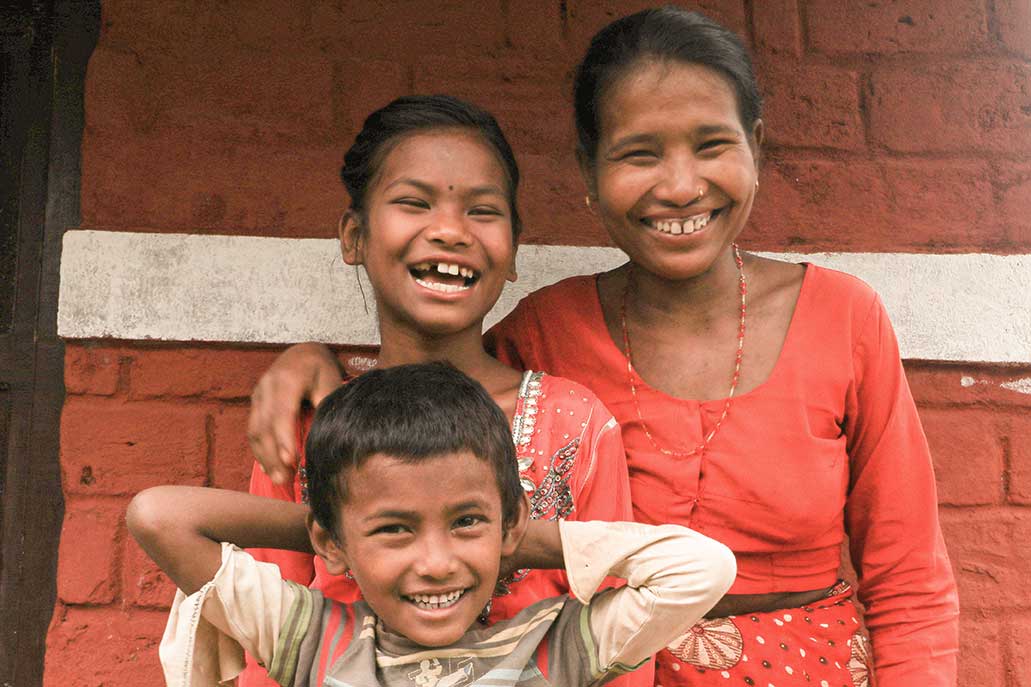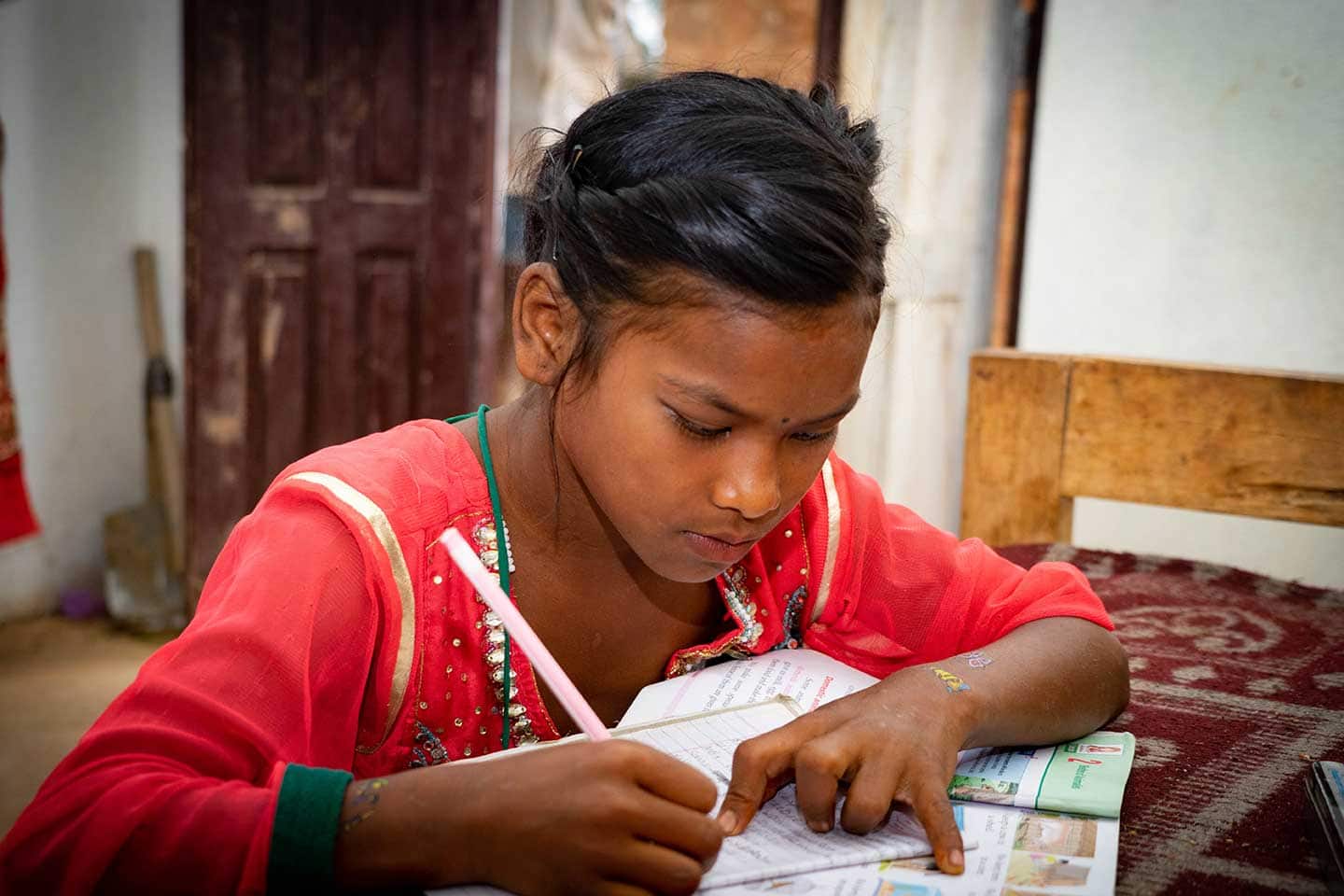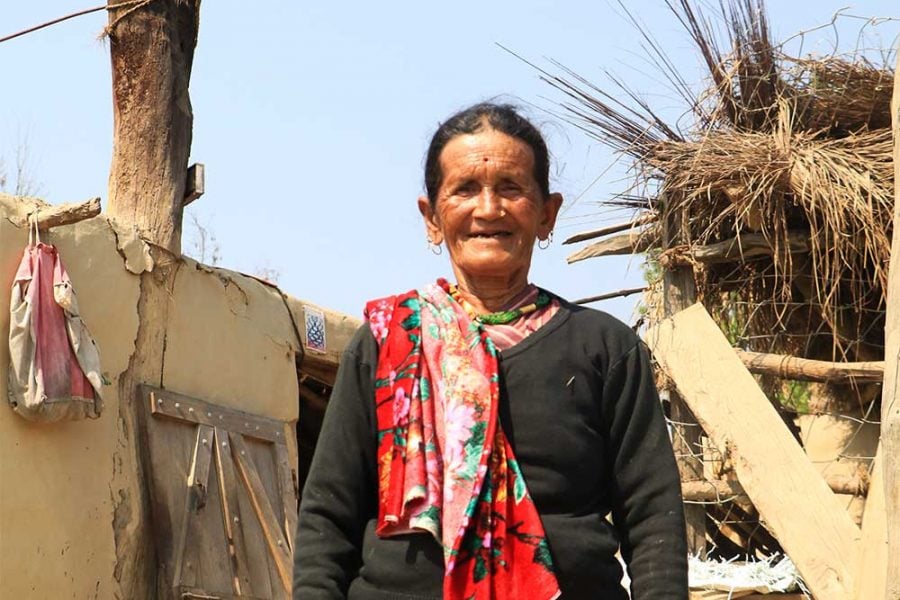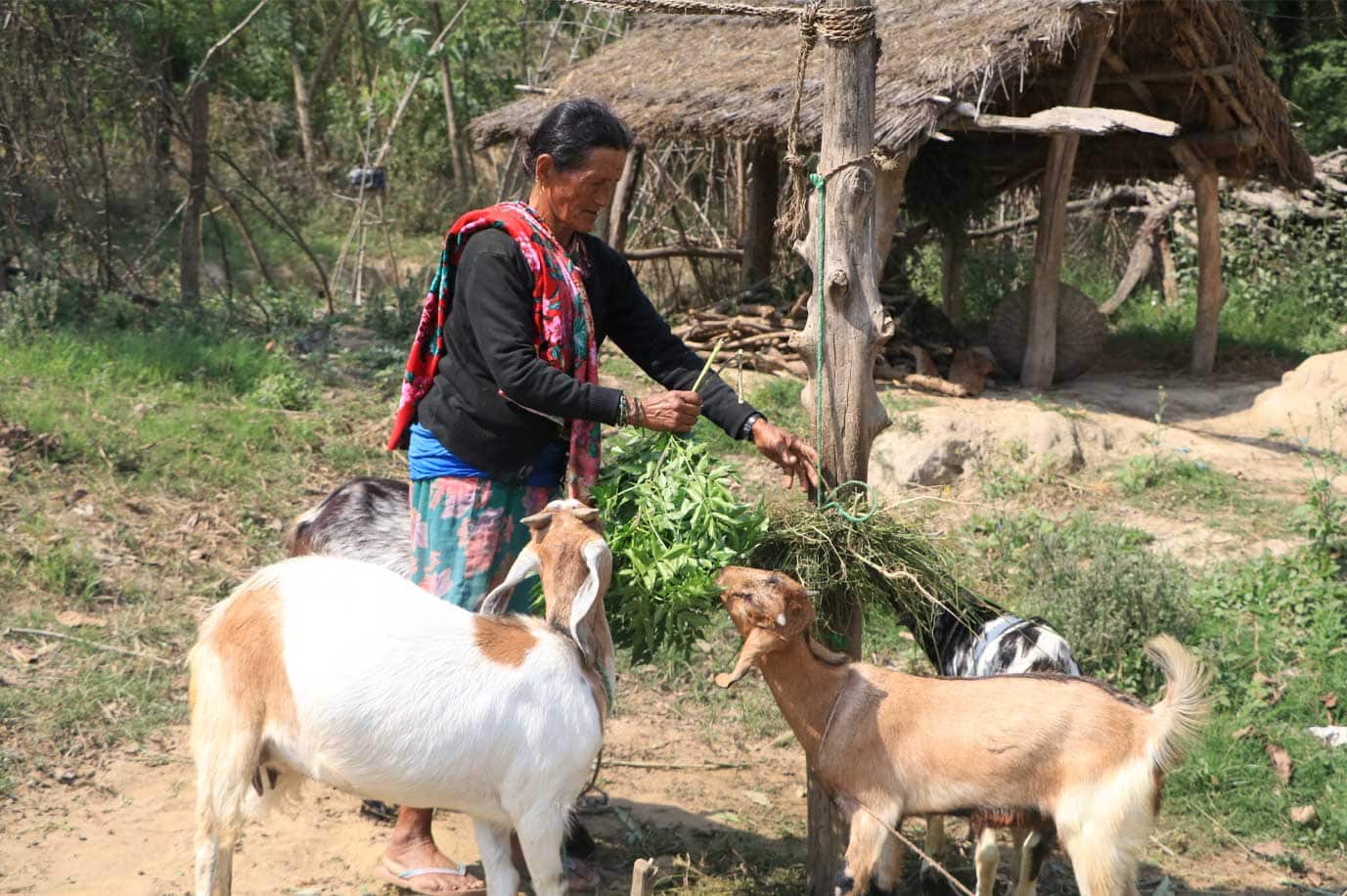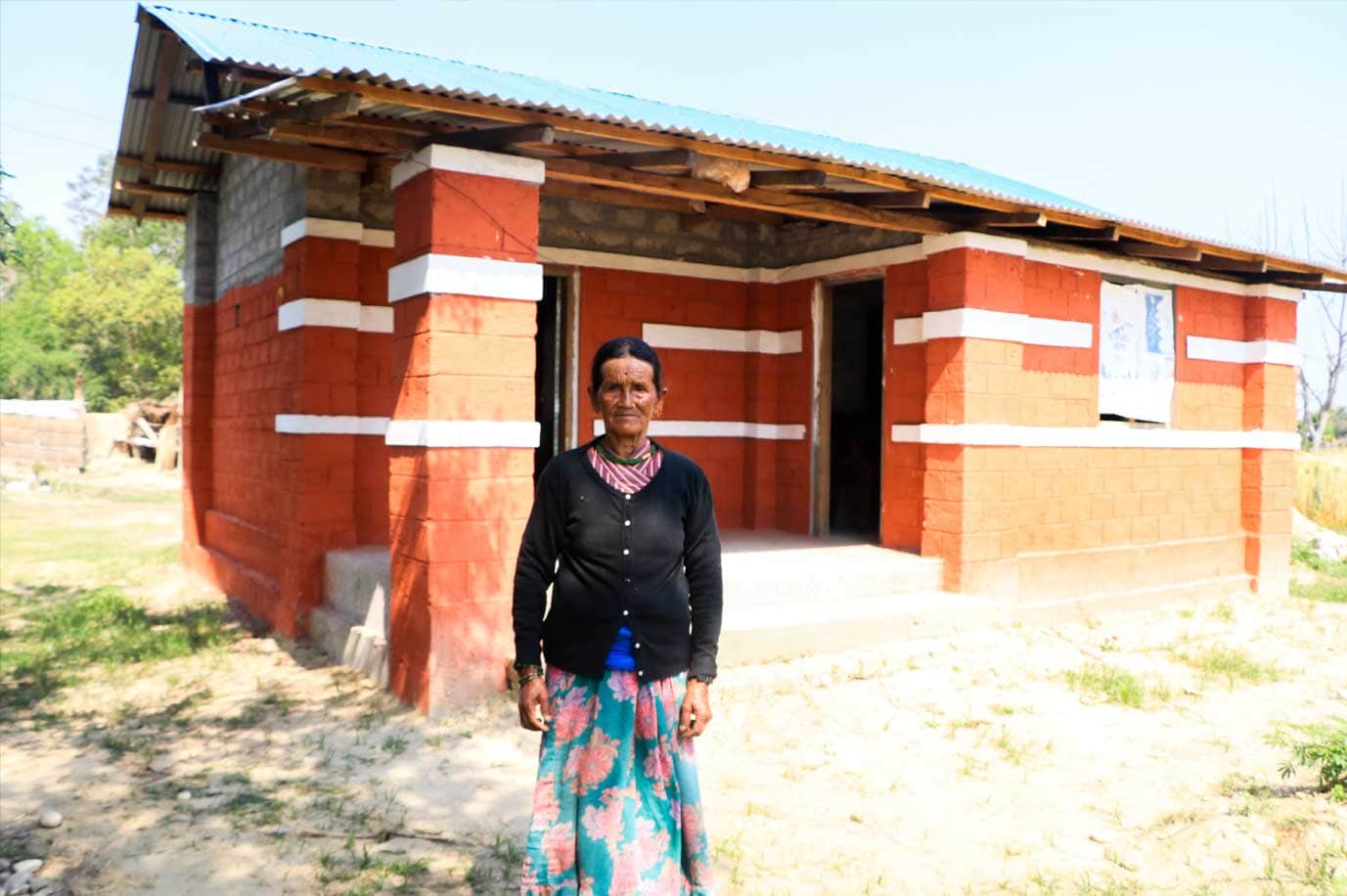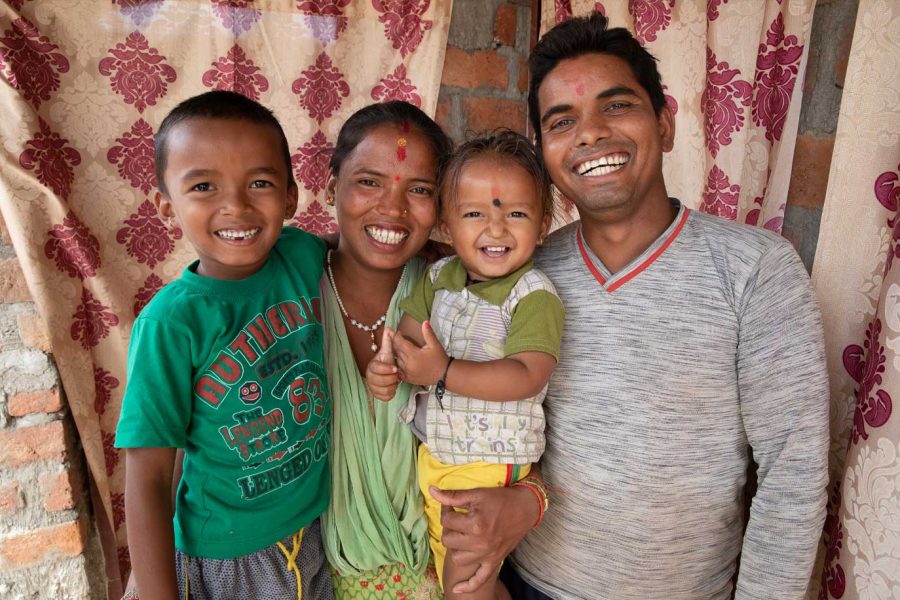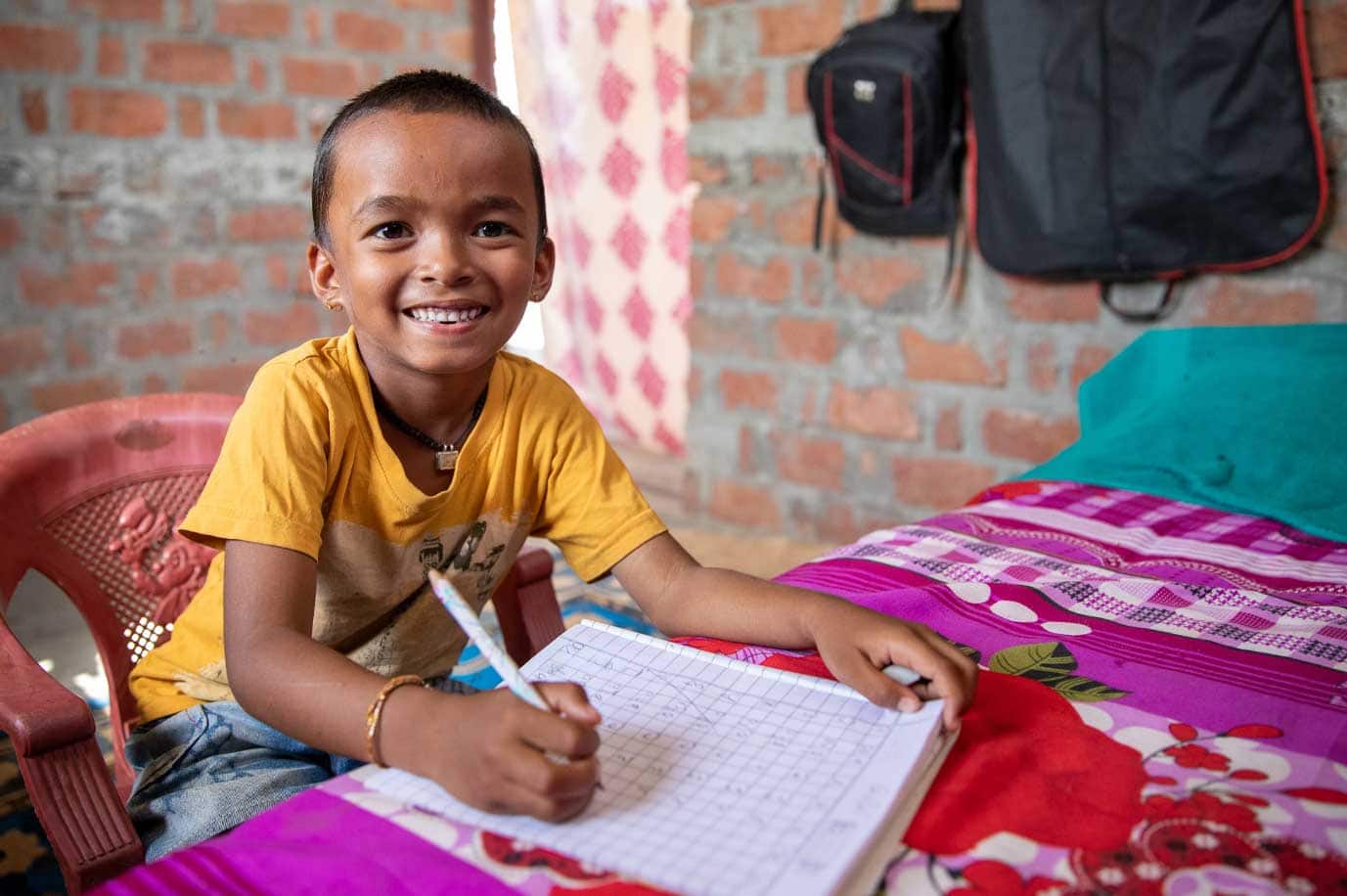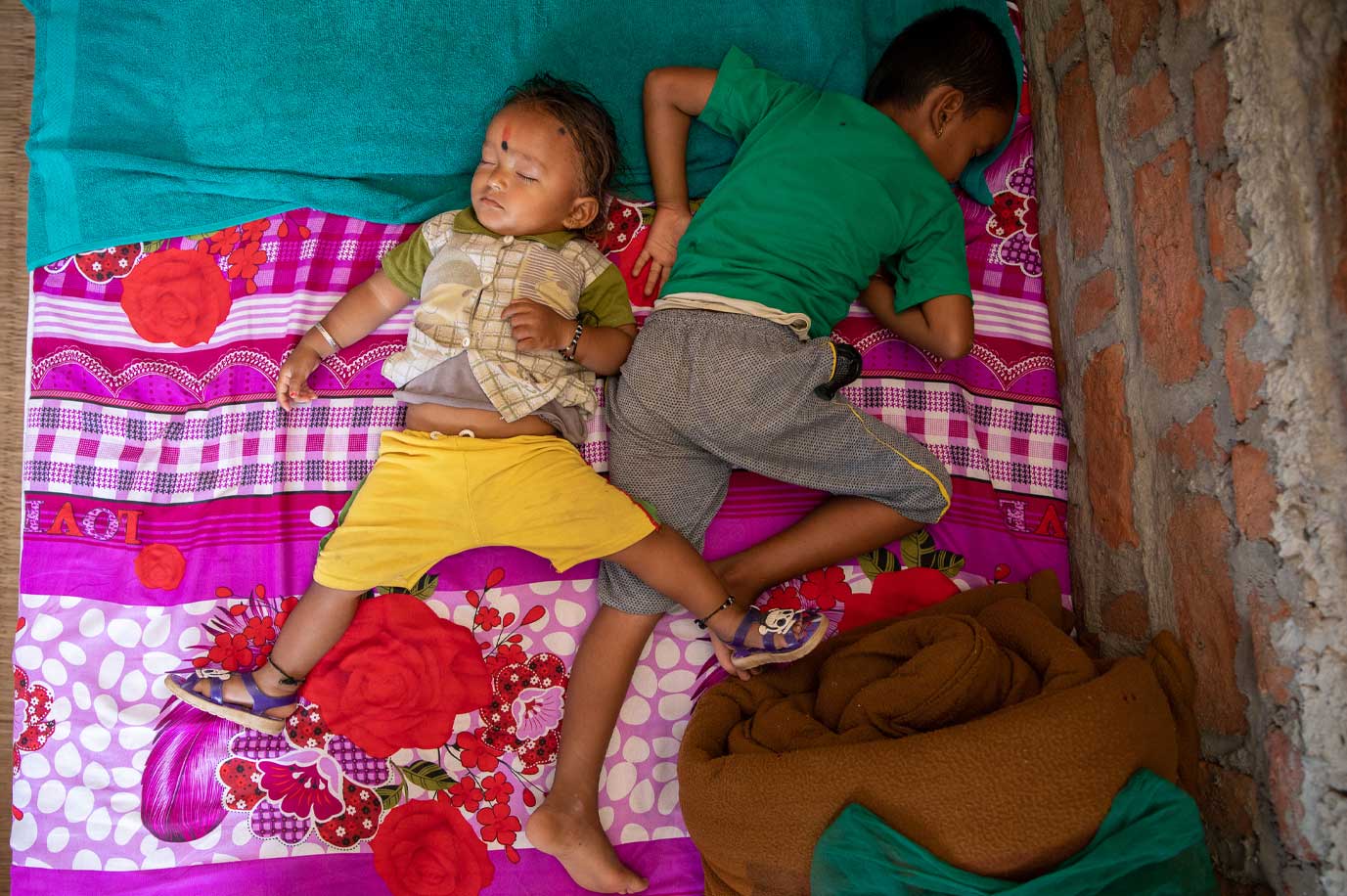Housing Programmes in Nepal
25% of the population in Nepal or 1 in 4 are living below the national poverty line. At the same time 49% of the population lives in substandard housing and less than 30% of people’s houses are structurally safe.
This situation deteriorated dramatically with the 2015 earthquakes, and massive floods in 2017 which left over 900,000 houses destroyed or severely damaged. Many of those who were most affected by the disasters are from marginalized ethnic groups and lower castes, families with disabilities or severe health problems, and single-headed households.
Four years in a one room shack
Homeless after the earthquake
When the devastating earthquake hit Nepal in April 2015, Rita’s mud and brick house collapsed in less than a minute. Rita, who was only ten at the time, had to abandon her ancestral home and move with her parents and two siblings into a makeshift shelter of walls made of plastic sheets and a corrugated metal roof.
What Rita didn’t know, was that this was going to be her family home for the next four years. This flimsy one-roomed shack had to withstand the battering rain, thunder, and lightning during the severe monsoon seasons.
No money for rebuilding a house
The prospect of moving back into a permanent home became a distant dream when Rita’s mother, Kanchi, took ill. Kanchi had struggled to hold everything together for the family following the earthquake and suffered a mental breakdown soon after. To get ongoing medical help for her, the family not only had to spend all their monthly earnings (approximately $100 per month) but also the first tranche of government aid for rebuilding their house ($430).
A helpful hand from Habitat volunteers
In September 2018, Rita’s dream of living in a proper home again was made possible with help from Habitat for Humanity Nepal and Habitat volunteers. Rita’s father, Kale, worked side by side with Habitat’s Global Village and Legacy Build volunteers from the USA, Germany, and New Zealand to cement the brick walls of his new house. The family moved into their finished home nine months later.
For Rita, the most positive change is feeling safe inside her own home. With a strong, stable house, Rita’s mother, Kanchi, was able to recover from her breakdown. Habitat for Humanity Nepal is also training local communities in how to be more resilient and mobilizing youth groups to champion the cause of decent housing.
Looking forward to her first Dashain* in a new home
Despite coming from a big family, Jhupi Budhathoki still feels isolated and lonely. At the age of 65, Jhupi is still working. She works on her small plot of land, raises goats, and works on other families farms.
In 1996, her husband died of respiratory complications after 12 years of treatment, leaving behind six children. Her youngest daughter was only seven years old at the time. After a couple of years, four of her daughters were married, and her two sons had left home to start their own lives. As her children’s’ families grew, Jhupi felt isolated at home and worried about being a burden to her sons, her daughters in law and her grandchildren.
“I felt I was a stranger in my own house. Though they never said anything verbally, their behaviors indicated that I had become a burden for them. I cried so many nights, I had no place to go, but I had to go”.
Juhpi initially lived on the veranda, then gradually saved enough money to build a mud house for herself. Unfortunately, the 2017 massive flood washed away her house. It took all her belongings, food and cattle, leaving her to seek refuge in a communal shelter.
The District Disaster Management Committee (DDMC) and Participatory Approach for Safe Shelter Awareness (PASSA) groups put her name forward to Habitat for Humanity Nepal.
Habitat for Humanity assisted her with construction materials and labour support to build a two-room house. For her, the best thing that has happened in the last year is having a safe shelter she can call home. Having gone through so much in her life, she is looking forward to celebrating Dashain her new home. Her family members are coming to visit her in her new house to receive blessings.
*In Nepal, Dashain is the longest and most notable festival on the calendar, and many Nepalese expatriates actually return to Nepal specifically to observe Dashain Festival in their homeland. Dashain runs from the “bright moon” until the full moon in the Hindu month of Ashvin, lasting for 15 days.
Powered by Dreams
Glancing at his two sleeping sons, Bir Ram has mixed emotions but in a good way. He is relieved that his children can sleep peacefully in a healthier home that is safe from animals, insects and extreme weather.
“I feel their sound sleep not only makes them healthy and happy but it allows them to have better dreams. My heart cries with joy because I know my kids are dreaming about a better future. When you dream, it becomes a reality, and safe shelter creates the dream and hope.”
Thirty-year-old Bir Ram gained his freedom after the Government outlawed the bonded labour system (or modern day slavery) in 2008. He left his village Mahendranagar in western Nepal to work as a cook in Malaysia when his eldest son Shisir, now 6, was just over a week old. He was torn between taking on a job that would allow him to send more money home and leaving behind his wife Lalita and infant son who were both suffering from jaundice.
Although Bir Ram was anxious and even depressed during the four years he was in Malaysia, he worked hard to realize his dream of improving his family’s life.
With the support of Habitat for Humanity and the Government of Nepal, Bir Ram and his family finally have a house they can call home. He is currently working as a builder in is community, earning enough so he does not have to leave his family again.
“After building our house, my hope for life changed. I plan to work hard here in Nepal, so I can see my boys sleeping soundly. I always think about how beautiful their dreams must be, and I want to make my kids’ dreams a reality by providing them with the best education I can, so they can live a life they deserve.”
Our collective action can save lives.
Support our Housing Programmes around the world today:

